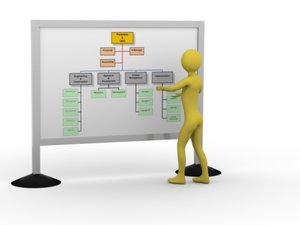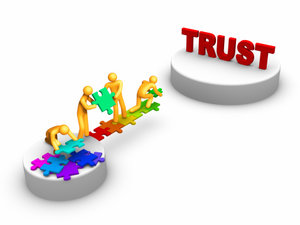Bob Dignen on Project Management Dynamics

Last month, the Munich English Language Teaching Association (MELTA) organised a one-day workshop for their English language trainers with Bob Dignen of York Associates, a company which provides English language training, professional communication skills training and international team and leadership training for professional clients in the private and public sectors.
In my last blogpost, we looked at the importance of helping our learners become better communicators, not only by focusing on the accuracy and fluency of their use of the English language, but also by bringing in some management training content into our classroom, and helping them to reflect on their communication strategies. In the blogpost, I also summarised the first part of Bob’s workshop on ways to help our learners develop effective interpersonal skills.
In the second half of Bob’s workshop, he looks at an important and prevalent part of the modern business world – the challenge of managing and working in project teams, especially one that involved international and intercultural communication.
To kick off, Bob starts by asking what seemed like a simple question, ‘What is a project?’
A project is a temporary activity designed to a unique product, service or result. It has a defined beginning and end in time, and therefore defined scope and resources.
A project is thus one that is defined by:
Scope
Cost
And is time-bound and not repetitive

The project mindset often involved the following:
- Speed and urgency
- Results-driven
- Ability to deliver under pressure
- Entrepreneurial
- Ability to ‘engage for change’
- Learning orientation
Obviously, the skills and mindset required for working on a project could be significantly different from those required for the day-to-day duties with a team that one might work with for five years.
Very often, however, many employees are put into project work on top of their daily repetitive line duties, and those who are good at building relationships just might not be good at being speed-driven and working under pressure.
Sometimes, external consultants are employed to handle projects but due to differences in priorities and backgrounds, the knowledge and suggestions brought in by the external consultants don’t ‘stick’ and are dropped the moment the consultants leave the organisation, resulting in a waste of time and money.

The idea of project management was developed in the 1950s and since then, there have been different institutes and organisations with different project management methodologies.
Key concepts
With learners who are involved in projects, find out:
1. What are the key stages?

Which stage are they at now? What is involved?
Initiation – Planning – Execution – Monitoring & controlling – Closing
In between each stage is a milestone/gateway, where the workload and pressure could be enormously tense on those involved.
2. Who are the key people involved?

Board of directors – Steering committee – (sponsor) – Project manager – Team members
There’ll also be people across the organisation that project team members are dependent on, but who are not ‘governed’ under the project hierarchy.
Get learners to do a stakeholder analysis where they rate those people involved according to how powerful they are and how much interested they have in the project, not unlike a SWOT analysis for projects.

In reality, a project is something that has multiple perspectives, and expectations and needs that would not all get fulfilled.
In addition, there is the challenge of working with an international team.
What extra competencies would be needed?
There will be differences in:
- Cultures
- Language
- Distance /Time zones
And therefore there will be challenges of:
- Uncertainty – moving out of your comfort zone and working in a way that you are not familiar with.
- Complexity – multiple legal frameworks, IT systems, customer bases, etc.
- Paradox – Most companies are not structured for working internationally. Their main goals might be to satisfy local customers, meet local targets, etc and not to help teams overseas working on the same project. Many just want to preserve their local entities and not collaborate and coporate with their counterparts overseas as they see them as competition.
- Diversity – Not just national cultures (that could risk stereotyping) but the diverse ways of seeing things and doing things.

Using the following ‘cultural dynamic framework’, Bob provides the trainer with a simple roadmap by which learners could discuss these dimensions in teams, and find levels of similarity and diversity between the way they operate and the way they perceive their team members operating.
Leadership:
Directing vs Enabling;
Powerful & Telling vs Supportive & Asking
Teamwork:
Defined role vs Flexible responsibility;
Explicit recognition vs Implicit recognition
(Germans praise by not criticizing; Americans criticize by not praising)
Planning:
Structure vs Organic;
Risk-sensitive vs Risk-tolerant
Communication:
Direct; Believe in Truth vs Harmonious;
Consensus-based vs Entrepreneurships
Relationships:
Emotional vs Neutral;
Coconuts vs Peaches
Time:
Monochronic vs Polychronic

In enabling better teamwork, it is also important to develop the ability to create trust amongst the team members.
Bob, here presents us with several trust strategies that are often used.
Seven Trust strategies
Factor 1: Competence, establishing credibility
Person A: I have worked in this field all my life.
Factor 2: Common ground; Commonality
Person A: Have you worked on a big IT project before?
Person B: Yes, I was part of an SAP software roll-out in the US last year.
Person A: Really? I’ve been involved with a US SAP roll-out too.
Factor 3: Compassion, empathy
Person A: My daughter is ill and I need to take her to the doctor.
Person B: Oh, why don’t you take the rest of the day off? I’ll let you know what happens in this afternoon’s meeting.
Factor 4: Openness/Inclusiveness & transparency of information
Person A: You weren’t invited to the meeting but I would like to brief you a little about some of the key points we discussed.
Factor 5: Reliability; keeping your word
Person A: I’ve managed to get the sponsor to allocate extra budget to the project. As I said at the start of the project and I’ll say it again, you just focus on doing your jobs on time; I’ll deliver the extra resources we need.
Factor 6: Openness/Inclusiveness about emotions
Person A: How do you feel about the delay?
Person B: To be honest, I’m really worried. How about you?
Person A: I feel the same. I’m worried that….
Factor 7: Willingness to trust first
Person A: I don’t need to see your work. I trust you…
Which are the most common ways of developing trust for our clients? Are there any preferred strategies? Why?
It is important in such discussions with clients to remember that we are not here to give our clients answers, but to give them options and different ways of thinking about things.

In talking about international project management dynamics, Bob wonders if companies are moving towards a more defensive position as organizations get more political. They are not tasked to collaborate, despite knowing the theories behind it. The different team members are often also representatives of different international departments, and thus could have different agendas from those of the project team. This could in turn cause conflict and discontent.
Dealing with Conflict
What is conflict?
And what distinguishes ‘conflict’ from ‘disagreement’, ‘dispute’, ‘misunderstanding’ and ‘fight’?‘Conflict’ is about emotionality and emotions are powerful drivers of behaviour; they are ever-present, hard to define and challenging to handle.
According to Fisher and Shapiro (2005), emotions arise when such basic needs are violated:
Appreciation – to feel valued
Affiliation – to feel a sense of belonging
Autonomy – to feel independent
Status – to feel respected

Some of the drivers of conflict in international projects could include:
- Ineffective communication or difference in communication styles
- Distance & time
- Pressure
- Intercultural and interpersonal issues
- Role conflicts
- Conflicting interests
- External forces we have no control over e.g. customer demand, prices of goods, etc
- Powerplay – defensive reactions, perceived disrespect
- Intrapsychic/Intrapersonal dimensions: e.g. Resistance to change
In a case study where the audience examined an email sent between members of an international team, Bob showed us how we could end up jumping to conclusions and being overly-negative when interpreting communicative messages, even describing the email writer using words such as ‘accusatory’, ‘patronising’, ‘disrespectful’, etc.
Bob then got us to do the exercise again, but this time looking for positive aspects of the email.
It was amazing how, with different ‘glasses’ on, we could perceive the intentions behind the same message completely differently, this time coming up with descriptors like ‘supportive’, ‘showing empathy’, ‘inclusive’ and ‘committed’.

What was clearly a lesson for all of us to learn was the fact that when dealing with different cultures, different agendas and different ways of doing things in a team, the most human thing to do was to sit back and criticize what is not familiar to us. To insist on seeing things our way, and blame others when things go wrong.
What is perhaps a more useful and more practical way of dealing with conflict is to first reflect, and look at how we can change our own perceptions and our own behaviour. To be less judgmental and less reactive. To learn to step back from our assumptions and instead be more constructive.
For we may not be able to make others change their ways and see things the way we do, but we can certainly make a change by first changing our own attitudes and behaviour.

Bibliography
Fisher, R. and Shapiro, D. (2005) Beyond Reason: Using Emotions as you negotiate. New York: The Penguin Group.
About English Teaching professional’s regular blogger:
Chia Suan Chong is a General English and Business English teacher and teacher trainer, with a degree in Communication Studies (Broadcast and Electronic Media) and an MA in Applied Linguistics and English Language Teaching from King’s College London.
A self-confessed conference addict, she spends a lot of her time tweeting (@chiasuan/@ETprofessional), Skyping, and writing. You can find out more about her on her blogsite: http://chiasuanchong.com


Comments
Write a Comment
Comment Submitted